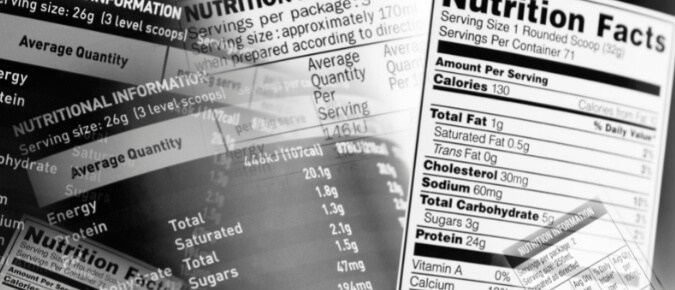
We are surrounded by an endless array of food choices and targeted with marketing designed to influence those choices.
When shopping, we may stick with the same products we're familiar with or try others we've heard about through friends or advertising. Other times the information on the front of a label can influence our decisions.
There is information already required on food labels to show us what's in the food but most of us don't have the time to stop and read all that fine print on the back of the pack.
The Health Star Rating is a simple system on the front of the pack designed to help us compare products without spending time reading the whole pack.
The Health Star Rating provides a summary of some of the nutrients that can be harmful to health: sodium, saturated fat, sugar and energy. It also considers protein, fibre, fruit, vegetable, nut and legume content. The result is a rating from ½ star (the least healthy) to 5 stars (the healthiest).
Shoppers can use the Health Star Rating to compare products within a particular food category such as breakfast cereals. It's not on all products because at the moment it is voluntary for the food industry to use.
Clear front of pack labelling to help Australians select healthier foods is an important part of our food system.
Cancer Council led the first Australian study into front of pack labelling in 2009. It showed the simple graphic on the front of the pack - in this case we used traffic lights - helped people correctly identify healthier food products and to make comparisons between products at a glance.
In 2014, we published another study that showed that people could identify the healthier choice when a summary of nutrient information was provided on the front of the pack.
Cancer Council has been involved in developing a front of pack food labelling system since it was first announced by the Commonwealth Government in 2012.
Federal, state and territory governments worked in collaboration with industry, public health and consumer groups to develop the Health Star Rating system in June 2014 and again from 2019 to 2021 on a five-year review of the system. During the review we advocated for improvements to the system so that it better aligned with the Australian Dietary Guidelines.
Healthy eating protects against certain cancers both directly, and indirectly through its impact on body weight.
Cancer Council recommends our diets are made up of mostly minimally processed foods including a variety of fresh vegetables, fruit, nuts, seeds, legumes and wholegrain foods. However, in the supermarket, the Health Star Rating can help you choose the better product.
There is still work to do to improve the Health Star Rating, particularly as more evidence comes in and the Australian Dietary Guidelines go through a review over the next few years.
Cancer Council will continue to advocate for improvements to the system. We also want to see it mandated as only through across the board take-up can Australians compare products and use it.
Along with other dietary information, the Health Star Rating helps consumers make more informed choices when shopping for food and drinks.






